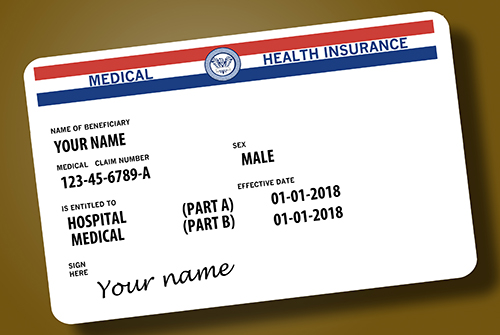 Dr. Michael Morrisey is a professor and head to the Department of Health Policy and Management within Texas A&M’s School of Public Health, as well as an expert in all things Medicare related.
Dr. Michael Morrisey is a professor and head to the Department of Health Policy and Management within Texas A&M’s School of Public Health, as well as an expert in all things Medicare related.
Dr. Michael Morrisey is no novice to health care. Since receiving his doctorate in economics from the University of Washington in 1979, Morrisey has used his expertise to research and teach on health insurance. Before coming to Texas A&M University in 2014, Morrisey worked at the University of Alabama as a professor for nearly 30 years. In addition, he has been employed at Northwestern University, the American Hospital Association, the Battelle Human Affairs Research Center and the University of Washington. Over the years, Morrisey has authored nearly 200 publications on health insurance and health economics, and served on various national and state advisory panels. Today, he works as a professor and head to the Department of Health Policy and Management within Texas A&M’s School of Public Health.
What is Medicare?
Medicare is health insurance for seniors over age 65. Sometimes, if you are disabled, you can apply to receive coverage even if you’re under age 65. Medicare gets confusing for many people because there are four separate parts of coverage: A, B, C and D. Part A covers hospital services, while B covers physician services. Part C is Medicare Advantage, and D covers prescription drug costs. Someone on Medicare is either using Original Medicare, (parts A, B and usually D) or Medicare Advantage (Part C and usually D). Original Medicare users enroll for Part A at age 65, but have to sign up and usually pay a premium for Parts B, C, and D.
What is Medicare Advantage?
Medicare Advantage plans, also known as Part C, is a managed care plan. It covers hospital services, physician services and usually prescription drugs. Unlike Original Medicare, Medicare Advantage plans tend to have more generous benefits, but have a limited set of providers.
What is the difference between Medicare and Medicaid?
Medicare is for those over age 65 or those who are disabled. On the other hand, Medicaid provides health insurance for eligible low-income individuals. Some people, called “dual eligibles,” qualify for both Medicare and Medicaid.
What is Medigap?
Medigap is a private health insurance plan that Medicare beneficiaries may purchase. These plans cover the deductibles and copays of Medicare-covered services, but generally do not cover services that are not also covered by Medicare.
 One should enroll in Medicare four to six months before turning 65.
One should enroll in Medicare four to six months before turning 65.
How does one qualify for Medicare?
You can become eligible after working in a Medicare-covered job for 10 years. Today, almost every job is covered by Medicare.
When should someone sign up for Medicare?
Four to six months before you turn 65 is best. Social Security will typically send you an invitation to apply.
If you’re still working and have insurance, do you need to enroll at age 65?
You don’t have to, but you certainly want to. Even if you’re still working, you want to sign up for at least part A because there is no cost to you. Part B, on the other hand, has a premium, so many people who are still covered by their employer’s insurance wait until they retire to enroll. After retiring, you’ll immediately want to sign up for Part B and Part D to avoid higher premiums from delayed enrollment. It’s important to remember that once you sign up for Medicare, you cannot contribute to a health savings account (HSA) any longer. You are only eligible for an HSA if you have a high deductible health plan and no other coverage. So, having Medicare means you can’t contribute. You can withdraw money, however.
How much does Medicare cost?
Part A has no premium. Almost everyone buys Part B coverage. The standard premium for Part B in 2019 is $135.50 per month. Part D premiums vary depending upon the generosity of the plan selected. Medicare Advantage costs can vary significantly between providers.
Does Medicare cover all health costs?
Not entirely. With Part A, which is hospital coverage, there is a spell of illness deductible, which is $1,364 in 2019. For Part B, the deductible is $185 annually, and after satisfying the deductible, you must also pay 20 percent of the physician bills. Part D for prescription drugs typically includes both a deductible and a copay that can vary.
 Medicare is health insurance for seniors over age 65 and offers four separate parts of coverage: A, B, C and D.
Medicare is health insurance for seniors over age 65 and offers four separate parts of coverage: A, B, C and D.
What is spell of illness?
Let’s put it this way: If I were to get hit by a bus and go to the hospital for three days and then have a stroke a week after being discharged from the hospital, my deductible from my initial stay would still cover my stroke. “Spell of illness” means that I am out of a hospital or skilled nursing facility for 60 consecutive days.
Can doctors choose not to participate in Medicare?
Yes, they can, but the vast majority participate.
Where can a person go to get help in choosing a Medicare plan or to resolve issues?
For questions or issues, you can visit www.medicare.gov.
Disclaimer: This article is intended to share general information on topics related to Medicare and health insurance. This article should only be used or referenced as a source for general advice. Visitors/readers should seek advice from a professional representative to better understand the best plan for their individual needs.